WHEN BRANDON CANYON’S mother Leone was diagnosed with uterine cancer, he drove her to treatment sessions at the nearest cancer center—a 200-mile round trip on rough roads. Gas was a significant expense, but their only other option was to forgo treatment. The Canyons are members of the Navajo Nation, which covers many thousands of square miles in the area where New Mexico, Arizona, and Utah meet. Throughout its history as a Native American reservation, it has had underfunded health-care facilities and never a practicing oncologist—until recently, that is. On January 11, 2019, the first cancer center in the Navajo Nation opened on the campus of the Tuba City Regional Health Care Corporation, effectively removing major barriers—financial, logistic, and cultural—that have impeded access to cancer treatment.
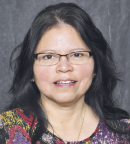
“The difference is huge between a cancer center close to home without language and cultural barriers and a cancer center that is many hours away from family and community.”— Lynette Bonar, RN, MBA, BSN, FACHE
Tweet this quote
“The difference is huge between a cancer center close to home without language and cultural barriers and a cancer center that is many hours away from family and community,” said Lynette Bonar, RN, MBA, BSN, FACHE, Chief Executive Officer of the Tuba City Regional Health Care Corporation, who has been working since 2016 to make the new cancer center a reality.
Landmark Opening
THE TUBA CITY facility, which took over its own program from the Indian Health Service in 2002, includes a hospital with more than 100 physicians as well as nurses, physician assistants, midwives, social workers, case managers, and other professionals. But this is the first time that it has been able to offer cancer treatment.
Ms. Bonar and Mr. Canyon were in Washington, DC, recently to deliver keynote speeches at the annual National Comprehensive Cancer Network® (NCCN®) Patient Advocacy Summit. They talked about the difference a local cancer center will make for the area’s approximately 350,000 inhabitants, including not only residents of the Navajo Nation but also Hopis and Southern Paiutes in neighboring territories.
Among those listening were husband-and-wife oncologists Frank Dalichow, MD, and Johanna DiMento, MD, who are among the first to practice at the new facility. Coming from practices in Baltimore and Westminster, Maryland, each with more than 20 years of experience in medical oncology, they are enthusiastic about the turn their lives are taking.
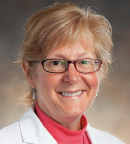
Johanna DiMento, MD
“This is something that is very meaningful to me, and I look forward to working with staff at Tuba City Regional Health Care Corporation in improving the lives of the people who live on the Navajo and Hopi reservations,” Dr. Dalichow said.
The opening of the new cancer center was a landmark for the Tuba City Regional Health Care Corporation but not the end of its effort to improve access to care. One future goal is to provide radiology (including positron-emission tomography) and radiation oncology services, which it now lacks, and it is working with the University of Pennsylvania to assess services via a teleradiology program. Also planned is a permanent structure for the cancer center, which is now housed in a large modular unit.
The NCCN meeting, with a theme of Advocating for Equity in Cancer Care, examined obstacles to care that spring from a variety of circumstances. “People with cancer can be excluded from optimal care for many reasons,” said NCCN’s Chief Executive Officer, Robert W. Carlson, MD. They include “geographic location, socioeconomic class, sexual orientation and identity, insurance status, unconscious bias, and other aspects beyond their control.”
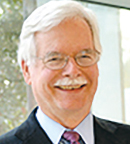
Robert W. Carlson, MD
The purpose of the meeting was to learn more about these and other barriers and share strategies for addressing them.
Language and Cultural Barriers
IN ADDITION TO transportation, a major problem for Leone Canyon’s family was lack of accessible information about cancer, said her son, Brandon. Language can be one reason for this obstacle. In about 40% of Navajo Nation households, Navajo—not English—is the first language.
To address language and other cultural barriers, the Tuba City Regional Health Care Corporation is working with the Cancer Support Community, an advocacy organization with a global network of patient support centers. Elizabeth Franklin, LGSW, Executive Director of the Cancer Policy Institute at the Cancer Support Community, said the organization is adapting its services to accommodate the population served by the Tuba City Regional Health Care Corporation, including translations of educational materials about cancer and psychosocial services.
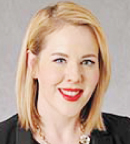
Elizabeth Franklin, LGSW
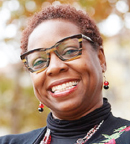
Shonta Chambers, MSW
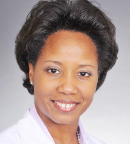
Natalie Dickson, MD
Another major obstacle in many places, speakers and panelists said, is limited access to the Internet, with its extensive health and medical information and communication resources. “Broadband technology and access are becoming a patient and public health issue,” said Shonta Chambers, MSW, of the Patient Advocate Foundation. Natalie Dickson, MD, of Tennessee Oncology, one of the nation’s largest community-based cancer care organizations, agreed, noting that a substantial proportion of the population served by Tennessee Oncology does not have a smartphone.
Panel discussions at the meeting also explored subtler cultural barriers, including those for the lesbian, gay, bisexual, and transgender (LGBT) community, when partners and families are not legally recognized as families for inclusion in care decisions, as discussed by Liz Margolies, LCSW, of the National LGBT Cancer Network.
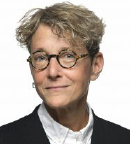
Liz Margolies, LCSW
Sense of Stigma
IN SOME COMMUNITIES, cultural barriers can be exacerbated by a sense of stigma associated with cancer. Panelist Gloria Zhang, PhD, of New Tang Dynasty Television, said that many in Asian communities don’t want to admit or talk about cancer for this reason and may postpone seeking care.
Stigma also attaches to specific kinds of cancer, something the Anal Cancer Foundation has been working to combat through its programs, said panelist Justine Almada, who cofounded the Foundation with her siblings after losing their mother to the disease.
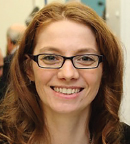
Justine Almada
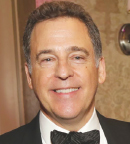
Marc Futterweit, JD
Speakers and panelists representing the National LGBT Cancer Network, the Male Breast Cancer Coalition, the Kidney Cancer Association, the Global Liver Institute, and the Pancreatic Cancer Action Network spoke about the subtle barriers for patients who have types of cancer that are associated with stigma or are simply less common than others.
Marc Futterweit, JD, of the Male Breast Cancer Coalition, said that not long ago there was little recognition of, or patient information about, male breast cancer. Now more than 500 men belong to the coalition, which was formed in 2014 by patients, their wives, and friends. They have fought for insurance coverage, clinical studies, and other kinds of research, he said. Now, in many states, the 3rd week in October is recognized as male breast cancer week—another win for those working patiently to create equity in access to care. ■
DISCLOSURE: Ms. Bonar, Dr. Carlson, Ms. Franklin, Ms. Chambers, Ms. Margolies, Dr. Zhang, and Mr. Futterweit have no conflicts of interest. Dr. Dickson is a consultant/advisor for Synergy Healthcare, LCC, and Via Oncology.

